As guilty pleas and guilty verdicts from some of his closest advisors pile up, one question naturally bubbles to the surface: what happens if a president is impeached and removed from office? Previously we have discussed how a president is impeached, tried, and removed. But, the questions that House members and senators must ask is what are the consequences of such action. Ultimately, impeachment is a political, legal, and institutional process, and those who vote on such an issue must consider each of those aspects.
Yes, impeaching and removing the president of the United States would be an historic event. It would amount to the biggest story in American society since the September 11th terrorist attacks. It would absorb weeks of media cycles and be on the lips of most Americans, whether they support, oppose, or are indifferent to the president. However, from an administrative perspective, the removal of a president would be a fairly routine process, far less disruptive than other events in American politics.
The simplicity of impeaching and removing a president
Some may argue that the removal of a president would be an unprecedented, cataclysmic event in our politics that would throw the American system into turmoil. In reality, no such turmoil would exist. The Constitution lays out a very clear line of succession—the vice president would become president, and the vacancy in the vice presidency would be filled by nomination and confirmation by both houses of Congress—an action that has taken place twice in history.
What’s more, because the president and the vice president are elected on a joint ticket, the transfer of power would pass from one person of the same party to another person of the same party. In the case of President Trump, his vice president is someone who supports many of the same policies, would likely nominate similar judges, and appeals to many of the same ideological groups in the electorate. Vice President Pence would take over a government with appointed leaders with whom he is familiar, would work with a Congress with whom he is familiar, and continue to engage with world leaders in a similar manner that he has been since taking office in January of 2017.
In time, President Pence would surely dismiss some appointees and fill those positions with his own team, but that would not happen on Day 1. Instead, he would inherit a government that is largely staffed and will continue to function the day he became president in much of the way it functioned the day before. That transfer of power is far less disruptive than what happened the day Mr. Pence became vice president. On January 20, 2017, he and President Trump swore their oaths, taking power from a different party and moving the policy goals of the United States government in an entirely different direction. On that day, there were very few individuals in appointed positions, leaving most government departments and agencies to be led temporarily by acting officials, largely drawn from a group of careerists. In fact, the sluggish pace at which the president filled politically appointed positions caused even more uncertainty and disruption than happens under most presidential transfers of power.
The magnitude of change is massive when a new president from one party is sworn in following the tenure of a president of a different party. The disruption has also been large in the cases of presidential assassination or sudden death, when a vice president has no time to plan or has no forewarning about his new role. (The most famous of such events occurred in 1945 when upon ascending to the presidency Harry S Truman was told, for the first time, that the United States possessed the atom bomb and was manufacturing more of them.) Impeachment and removal does not involve that type of rapid, immediate, and widespread disruption. Impeachment processes and a Senate trial are drawn-out affairs, giving the vice president time to prepare for the possibility of a promotion. For example, the House initiated impeachment proceedings against President Clinton in early October 1998, impeached him on December, 19, 1998, and his Senate trial vote was held on February 12, 1999.
In many ways, in the case of presidential removal, the U.S. maintains the same government with just one (not-so) new face in the Oval Office.
The political consequences of presidential removal
While removing President Trump may result in business-as-usual in a “new” administration, the political fallout could be considerable, as I have noted elsewhere. As of August 2018, removal would require that 18 Republican senators vote to convict the president in the event of a House impeachment. My colleague Elaine Kamarck has written on this blog that a number of Senators have openly and harshly criticized the president’s behavior in office and that that number is approaching 18. However, criticism and conviction in the Senate are two very different actions.
The president can consider himself safe from removal because of one glaring statistic: his support among Republican voters. According to Gallup, since January, President Trump’s approval rating among Republicans has averaged over 86 percent—reaching as high as 90 percent on three occasions. A massive super-majority of Republican voters approve of the job President Trump is doing. According to the Economist/YouGov poll conducted August 12-14, 2018, 57 percent of Republicans “strongly approve” of the way the president is handling his job (while another 28 percent “somewhat approve”). The reality is this: Republicans love President Trump.
Removing President Trump from office would surely be a Democratic-led effort, likely coming if and only if Democrats take control of the House after the midterm elections. However, Democrats alone cannot remove the president. Republicans would have to join the effort. Those Republicans would face a massive backlash from Mr. Trump’s most ardent supporters—a number that is surely not as high as the 57 percent of the GOP that “strongly approves” of him, but is certainly a significant percentage of voters.
The 18 Republican senators (depending on the party divide in the new Senate) who would be needed to convict the president would not be the only ones facing the wrath of a GOP voting backlash. The entire party would feel it. In an era of a Russian hacking effort intent on destabilizing American democracy, online communities are so addicted to nonsensical theories they could be diagnosed with a “Conspiracy Use Disorder.” For a segment of the electorate more interested in scapegoating than rational information processing, Republican fallout could be massive.
Those voters would surely be stoked by a constant stream of tweets from former President Donald Trump. Mr. Trump is not shy to push or invent conspiracy theories and motivate his supporters to think differently, even about people who were formerly seen as Trump loyalists. Such behavior would increase in advance of elections and would consume media attention. While there is a chance Mr. Pence could grow the base, particularly among moderates and independents, if Republican backlash led to Republicans staying home from the polls in 2020, the effects would be disastrous for the GOP. Those political realities, combined with the fact that the 2016 Trump-Pence ticket lost the popular vote and won the electoral college because of fewer than 80,000 votes spread across three key swing states, means that Republican House and Senate members—especially those with their eyes on a possible, future presidential run—are likely terrified of the prospect of impeaching and removing President Trump.
In the short run, Republican voters’ support is President Trump’s insurance policy, allowing him to keep a firm grip on his presidency. The same was true for President Nixon in 1973 and most of 1974. If that Republican support for Mr. Trump erodes, and GOP voters increasingly view him not as president but as the unindicted-co-conspirator-in-chief, Mr. Pence may want to start looking for Oval Office art at the Smithsonian and be prepared for a not-so-disruptive transfer of power.
The Brookings Institution is committed to quality, independence, and impact.
We are supported by a diverse array of funders. In line with our values and policies, each Brookings publication represents the sole views of its author(s).

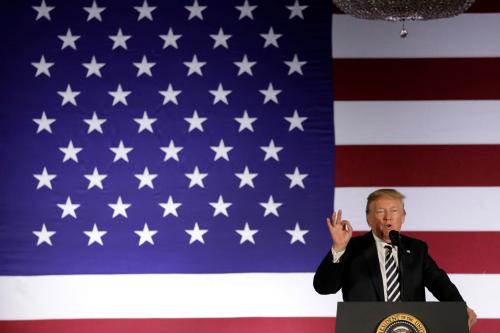
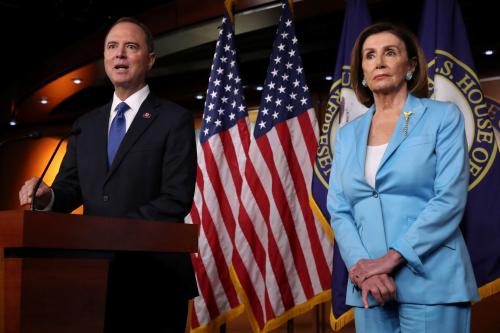
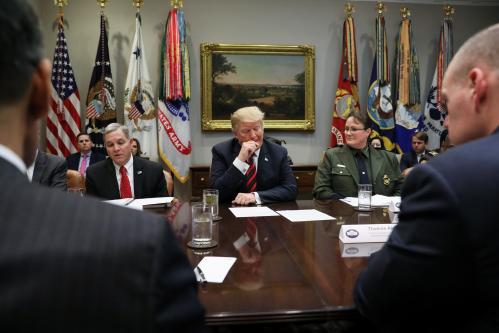

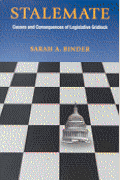
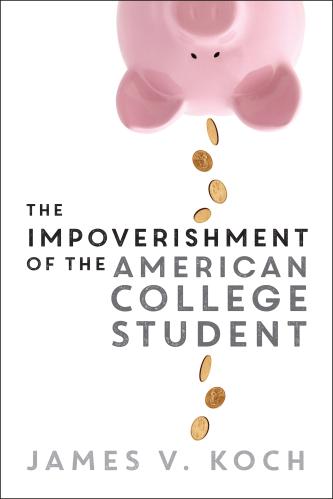




Commentary
Removing a president from office might be less disruptive than you’d think
August 22, 2018